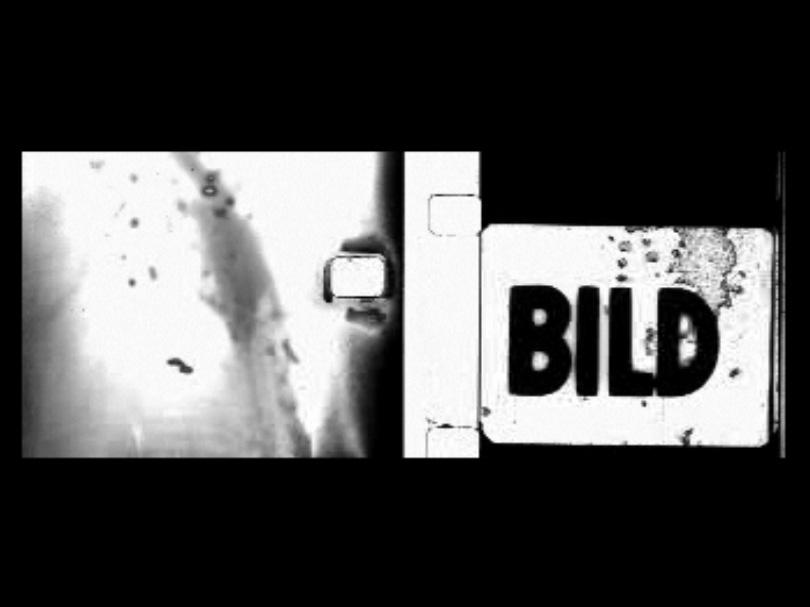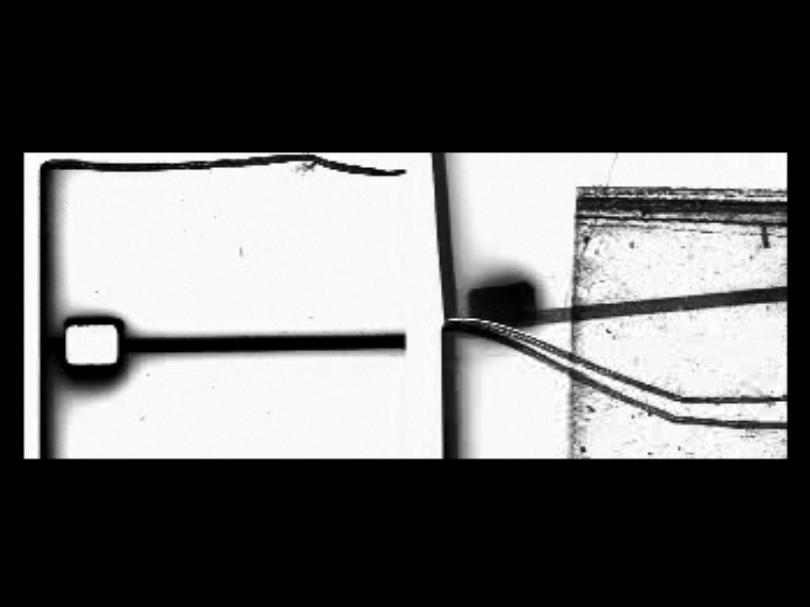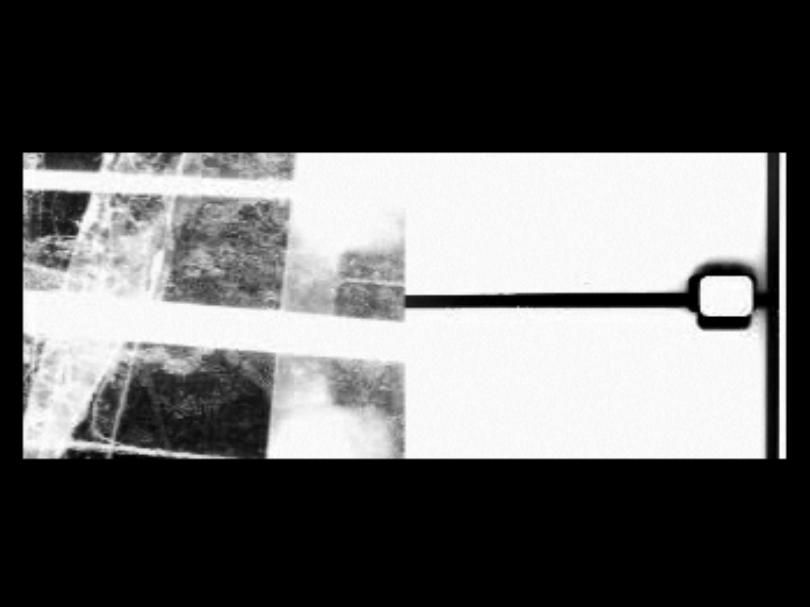Structural Filmwaste. Dissolution 1
At first Structural Filmwaste seems to be a reaction to the esthetics and methods of past Austrian avant-garde films: Leftover footage (Ernst Schmidt Jr.) was put together according to rigid plans (Kurt Kren) and shown in a split screen, one panel delayed slightly. While it follows an almost musical structure, the footage with recognizable images later disappears in a rhythmic sequence of the basic visual elements of black and white frames (Peter Kubelka).
Fruhauf, whose earlier works were also made as a kind of "handicraft", succeeded in embedding a paradigm switch in his homage to film art. Waste material from the darkroom was stacked and exposed in such a way that the edges of the frame, the splices, scratches, frame lines and sprocket holes, are now visible. The fact that "images" are involved is indicated by the superimposed label "Bild" (Image) which appears for fractions of a second. Fruhauf began by following a classic film avant-gardism which focuses on the apparatus involved and the film material.
The footage gradually undergoes a transition to a whiteness which is obviously digital in nature. What were scratches in the film strip´s emulsion now resemble the dark lines in a grainy video image.
The analog film image is replaced by the electronic video image, and the haptic quality of the material makes way for the purely optic nature of a two-dimensional white field generated by a computer. Not only the image but the medium, the material itself proves to be illusory, the original cinematographic apparatus has long since disappeared.
(Gerald Weber)
The moment of transition between argentic and digital, a transition which does not at all constitute a rupture, but rather a lap dissolve, of which the film gives an image. Its iconography comes from cinema’s magnified leftovers. As textural and geometric work on the celluloid fragments takes place, we are at the heart of structural cinema – but, suddenly, this industrial wasteland is simplified, turns abstract to the point of becoming a pure, abstract kineticism, vertical and horizontal, at the same time as the music becomes simpler and more punctual.
(Nicole Brenez)



